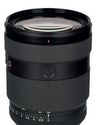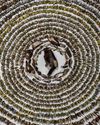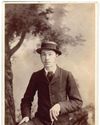
As I consumed some great ravioli made by Viktor's mum in her and her husband's fourth-floor modest Soviet flat in Kyiv, she told Maria and I how she woke up the night before and heard a Russian missile pass overhead. 'It made a "swoosh" noise, and I rushed out of bed into the hall to be away from the windows, but the siren soon sounded the all clear,' she recalled in a matter-of-fact way, so common to those Ukrainians we met on our project. They have almost normalised the lethal consequences of this heinous invasion. In another part of the country 25 people were killed that day.
We are in Kyiv to complete our photographic and video project, 'How do you dance in a war zone?' It all came about 12 months ago when Maria sat in on a webinar organised by Dance Base in Edinburgh where she was previously the photographer-in-residence. Viktor Ruban, a dancer, choreographer and director, was one of the speakers and replied to her question, but he also invited her to come and find out. This is often the way with photographic projects: a chance meeting at an event or a snatched conversation in a lift. Incidents that are serendipitous frequently arouse your curiosity and ignite the imagination.
Maria decided to accept the invitation.
After several months of Zoom chats between ourselves and dancers in Lviv and Kyiv, a plan was formulated with all the usual caveats about flexibility and playing things by ear. A six-day reconnaissance in winter established real as opposed to virtual contacts with performers, the military and galleries, and gave us the opportunity to check out some suitable locations.
Denne historien er fra July 18, 2023-utgaven av Amateur Photographer.
Start din 7-dagers gratis prøveperiode på Magzter GOLD for å få tilgang til tusenvis av utvalgte premiumhistorier og 9000+ magasiner og aviser.
Allerede abonnent ? Logg på
Denne historien er fra July 18, 2023-utgaven av Amateur Photographer.
Start din 7-dagers gratis prøveperiode på Magzter GOLD for å få tilgang til tusenvis av utvalgte premiumhistorier og 9000+ magasiner og aviser.
Allerede abonnent? Logg på

Calling The Shots: A Queer History of Photography
Offering an unprecedented view of photographic history through a queer lens, this is a wonderful and powerful book, says

Large-aperture standard zoom, too
SONY has also revealed a new premium standard zoom, the FE 28-70mm F2 GM.

Super-fast, high-res Sony Alpha Ai II
SONY has announced its new professional full-frame flagship camera, the Alpha A1 II.

39 awesome accessories
Our round-up of the best accessories we've used and reviewed this year, along with some old favourites. There's something here for every budget, starting from just £7, including tripods, bags, filters and much more

Such a thing as society
This autumn sees the launch of a major new book and exhibition devoted to examining the multiplicities of photography during 1980s Britain. Peter Dench finds out more

Join Club
The sociable Canvey Island Photographic Club is keen to grow its in-person meet ups

Capturing flight
Winners and finalists of Bird Photographer of the Year share their tips for success with Hollie Latham Hucker

140 years of change
AP has become the world’s oldest surviving consumer photo magazine because we have moved with the times, says Nigel Atherton

Preserving history in platinum
A deep dive into the meticulous art of platinum printing, and the collaboration between the Royal Geographical Society and Salto Ulbeek. Mike Crawford explores how they brought historical photographs to life with enduring beauty and precision

Life in the past lane
What was life like for an amateur photographer in 1884? John Wade takes a trip back in time